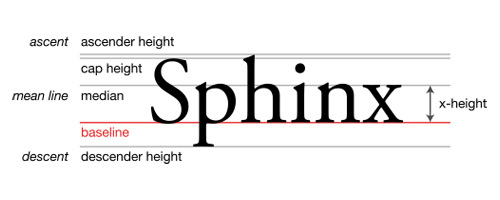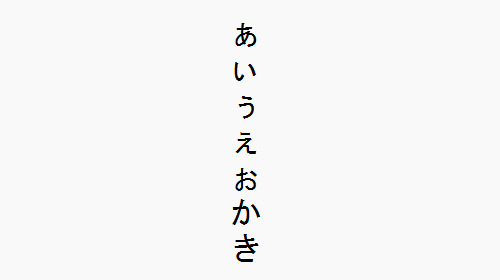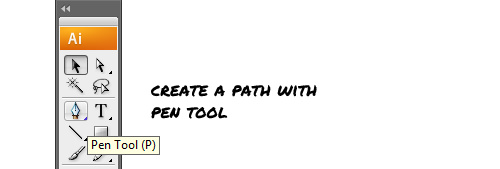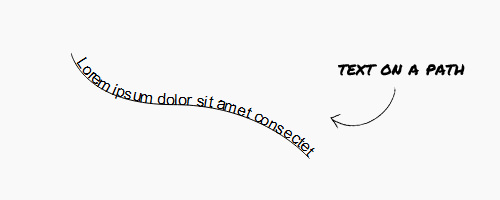Working with Text Elements in SVG for Dynamic Designs
In previous posts, we’ve explored how to use SVG to create shapes. In this article, we will focus on creating and styling text with SVG. SVG text offers a range of possibilities that go beyond what HTML text can achieve.
Let’s dive into these possibilities.
A Look into: Scalable Vector Graphics (SVG)
Vector graphics have been widely applied in print media. In a website, we can also add vector graphics... Read more
Basic Text Implementation in SVG
Before we explore advanced features, let’s see how text in SVG is formed at a basic level:
<svg> <text x="0" y="15">This is Scalable Vector Graphic (SVG) Text</text> </svg>
In SVG, text is defined using the <text> tag. This element primarily requires the x and y attributes to specify the baseline coordinates.

Image source: Wikipedia.org
As you can see, the text initially appears similar to regular HTML text.

Styling SVG Text with CSS
SVG text can be styled using CSS properties such as font-weight, font-style, and text-decoration. These styles can be applied inline, internally, or externally, just as with HTML elements. Here are some examples:
Bold Text
<text style="font-weight: bold;">This is text in Scalable Vector Graphic (SVG)</text>

Italic Text
<text style="font-style: italic;">This is italic text in Scalable Vector Graphic (SVG)</text>

Underlined Text
<text style="text-decoration: underline;">This is underlined text in Scalable Vector Graphic (SVG)</text>

Using the <tspan> Element
If you need to apply different styles to portions of text within the same line, you can use the <tspan> element. Here’s how to add bold, italic, and underline to specific parts of the text:
<text x="0" y="15"><tspan style="font-weight: bold;">This is bold</tspan>, <tspan style="font-style: italic;">this is italic</tspan> and <tspan style="text-decoration: underline;">this is underline</tspan></text>

Using Writing Mode in SVG
Text isn’t always written left-to-right. For instance, Japanese text is often written top-to-bottom. SVG accommodates this with the writing-mode attribute.
<text x="70" y="20" style="writing-mode: tb;" class="japanese">ãÂÂãÂċÂ…ã‡ã‰ã‹ãÂÂ</text>
The code above demonstrates how random Japanese characters can be vertically aligned using writing-mode: tb, where tb stands for top-to-bottom.

Creating Text Outlines in SVG
SVG text is essentially a graphic element, which means you can apply the stroke attribute to outline the text, similar to other SVG shapes.
<svg> <text x="0" y="50" font-size="50" font-weight="bold" stroke="black" stroke-width="0.5" fill="none">This is SVG Text</text> </svg>
In the example above, we use the stroke attribute to add an outline and remove the fill color by setting the fill attribute to none, resulting in the outlined text.

Making Text Follow a Path in SVG
In addition to horizontal and vertical text, SVG text can follow a custom path. Here’s how to do it:
First, define the path. While creating a path directly in HTML can be complex, involving coordinates and commands, it’s simpler to use a vector editor like Inkscape or Illustrator to generate the SVG code.

Next, place the <path> element inside a <defs> element, which stands for “definitions.”
<defs> <path id="textpath" fill="none" stroke="#000000" d="M0.057,0.024c0,0,10.99,51.603,102.248,51.603c91.259,0,136.172,53.992,136.172,53.992"/> </defs>
We’ve added an id attribute to the <path>. Now, link this id to your text using the <textPath> element:
<use xlink:href="#textpath"/>
<text x="10" y="100">
<textPath xlink:href="#textpath">
Lorem ipsum dolor sit amet consectetur.
</textPath>
</text>

Further reading: SVG Paths
Applying Gradient to SVG Text
Adding a gradient fill to text is also possible in SVG, and it’s even easier if you’ve completed the text path section above.
Start by defining the gradient colors:
<defs>
<linearGradient id="textgradient" x1="0%" x2="0%" y1="0%" y2="100%">
<stop stop-color="#999" offset="0%"/>
<stop stop-color="#111" offset="100%"/>
</linearGradient>
</defs>
With the gradient defined, you can now apply it to text by referencing the gradient’s id in the fill attribute:
<text x="0" y="80" font-size="72" font-weight="bold" fill="url(#textgradient)" stroke="none">Gradient</text>
Here’s how the gradient-filled text will appear:

Further reading: SVG Gradient and Pattern
Additional Resources
SVG text is incredibly powerful, and there’s much more to explore beyond this article. Below are additional resources to deepen your understanding:
- About Fonts in SVG – Divya Manian
- SVG Text Official Documentation – W3.org
- SVG Documentation at Mozilla Dev. Network with Examples and Tools – MDN
- SVG Writing Mode Attribute – MDN